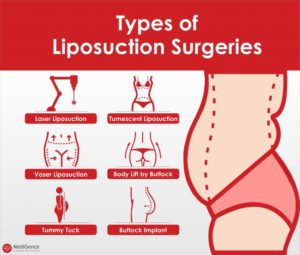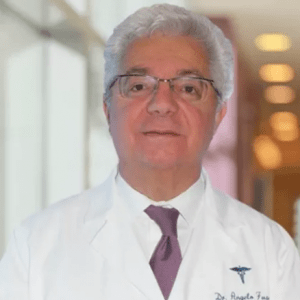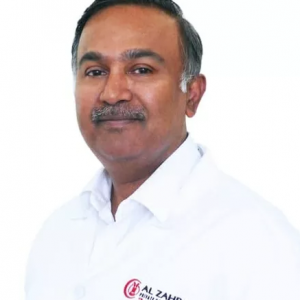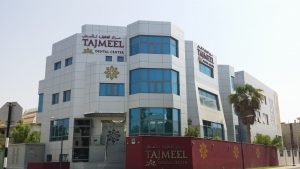Liposuction Surgery
Liposuction, also called Lipoplasty or Body Contouring, is a cosmetic surgical procedure. The procedure uses a suction technique in order to remove fat especially from specific areas of the body. Liposuction isn’t really considered as an overall weight-loss strategy or an alternative to lose weight method, since being overweight, a person is more likely to lose body fat through a proper diet plan as well as exercise or through bariatric methods like gastric bypass surgical procedure than by liposuction method. This plastic surgery method is good only if a person has too much body fat in a particular spot yet otherwise has s nominal body weight. Read More
Top Doctors For Liposuction Surgery Treatments
Top Hospitals For Liposuction Surgery Treatments
Liposuction Surgery
What is liposuction surgery?
Liposuction surgery is a procedure in which an excessive amount of fat deposited between the muscle and the skin is removed through the suction technique. It is also called lipoplasty or suction-assisted lipectomy [1].
- Abdomen
- Hips
- Buttocks
- Thighs
- Upper arms
- Chin or neck area
- Chest
- Back
- Calves and ankle region
- Breast or treatment of gynecomastia
- CoolSculpting, also known as cryolipolysis, is a non-invasive procedure, while liposuction is an invasive method done under anesthesia.
- Side effects of CoolSculpting usually go off within a few weeks. However, liposuction may cause blood clots or other complications.
- CoolSculpting can remove 25 percent of fat cells, while on other hand, liposuction can remove about 11 pounds of fat.
- Both CoolSculpting and Liposuction can be done as an outpatient procedure.
What are the types of Liposuctions?
Types of Liposuctions: Picture Courtesy: Medigence
There are only a few liposuction techniques. However, all they have in common is the thin tube called a cannula connected to a vacuum to suck the fat from the body. A few of the liposuction methods are as follows:
1. Tumescent Liposuction:
This is a common technique of liposuction method. In this surgical procedure, the surgeon usually injects a sterile solution along with lidocaine and epinephrine to the region where fat is to be removed. The saline solution makes it easier to remove fat with less pain and blood loss.
2. Ultrasound-Assisted Liposuction (UAL):
In this cosmetic surgical procedure, the surgeon uses sound wave energy by placing it under the skin to rupture the cell walls of the fat. This procedure liquefies the fat such that it can be suctioned out.
3. Laser Liposuction or Laser-Assisted Liposuction or Smart Lipo:
A laser is used to produce a burst of fat in this surgical procedure to liquefy the fat.
4. Power-Assisted Liposuction (PAL):
In this surgical procedure, a cannula is used to produce vibration, thus allowing the surgeon to pull out the fat faster and more easily.
Picture Courtesy: Medigence
There are only a few liposuction techniques. However, all they have in common is the thin tube called a cannula connected to a vacuum to suck the fat from the body. A few of the liposuction methods are as follows:
1. Tumescent Liposuction:
This is a common technique of liposuction method. In this surgical procedure, the surgeon usually injects a sterile solution along with lidocaine and epinephrine to the region where fat is to be removed. The saline solution makes it easier to remove fat with less pain and blood loss.
2. Ultrasound-Assisted Liposuction (UAL):
In this cosmetic surgical procedure, the surgeon uses sound wave energy by placing it under the skin to rupture the cell walls of the fat. This procedure liquefies the fat such that it can be suctioned out.
3. Laser Liposuction or Laser-Assisted Liposuction or Smart Lipo:
A laser is used to produce a burst of fat in this surgical procedure to liquefy the fat.
4. Power-Assisted Liposuction (PAL):
In this surgical procedure, a cannula is used to produce vibration, thus allowing the surgeon to pull out the fat faster and more easily.
How do we Diagnosis and Treat Liposuction?
Here are a few of the diagnosis and treatment procedures for liposuction surgery. Preparation for the treatment:- As part of the preparation for the treatment, the surgeon usually discusses what to expect from the surgery.
- The medical history of the patient is reviewed before the treatment.
- Doctor asks for any medical conditions where the patients are under any medications or supplements or the patient is allergic to any medicines.
- The surgeon will ask to stop a few medications, such as blood thinners, three weeks before the surgery.
- Few labs tests procedure will be done before the surgery.
- The surgeon usually marks small circles and lines on the region of the patient’s body to be treated.
- Photos of before and after liposuction will also be taken to compare.
- The surgeon decides on the appropriate technique for the patient based on their treatment goals and the region of the body to be treated.
 Picture Courtesy: Surgery encyclopedia
Picture Courtesy: Surgery encyclopedia
- Local anesthesia is administered in a few cases before the procedure. While in some of the other surgical procedures, the patient may require general anesthesia where the patient is unconscious till the end of the surgery.
- A sedative is given through an IV fluid injection to help the patient remain calm and composed.
- The anesthetist will monitor heart rate, blood pressure, and oxygen level in the blood continuously throughout the procedure.
- The surgical procedure usually takes a few hours, depending upon the extent of fat reduction.
- The patient may have to stay in the hospital overnight to monitor their vitals, check if the patient is dehydrated due to the surgical procedure, and administer IV fluids in such cases.
Prognosis and Post-treatment:
- The surgeon prescribes medication to control the pain as well as antibiotics to help reduce the infection
- Post-treatment surgeon usually leaves incisions open and also places a few temporary drains for fluid drainage
- Wearing tight compression garments are usually advised post-surgery to help reduce swelling for a few weeks
- Swelling from the surgical procedure usually subsides within some weeks
- The patient can expect the area treated to have an appearance that’s leaner within a few months
- Many patients can get back to normal life within 2 weeks of surgery
- Recovery results from liposuction procedures are long-lasting until and unless the person maintains a proper weight.
- It is advised by the doctor to maintain a proper diet and have a good exercise regime to maintain weight post-surgery
What are the risks associated with liposuction?
Risks with Liposuction Surgery: Unlike any surgery, liposuction has its risks involved, and a few of them are as follows:- Contour irregularities
- Numbness, skin necrosis
- Scarring
- Fluid accumulation
- Internal puncture
- Bleeding
- Infection
- Fat embolism
- Heart or Kidney problems
- Lidocaine toxicity
- Burns from instruments
- Damage to nerves or muscles
- Blood clot in deep veins
How much does the Liposuction surgery cost?
Liposuction Cost: The cost of liposuction usually varies depending upon the origin of the country the patient is located, the region of the body to be treated, and the expertise of the doctor. However, average liposuction costs $3,500.FAQ
1. Does liposuction work?
Yes, liposuction results usually are long-lasting as long as the patient maintains their weight.
2. Is large volume liposuction safe?
Usually, large volume liposuction is a safe and effective procedure, especially when patients are carefully selected. Also, when anesthetic and also surgical techniques are properly performed.
3. Is there liposuction with no surgery?
CoolSculpting is a method that helps to remove extra fat cells from underneath the skin without surgery.
4. What are strawberry laser liposuction reviews?
With its great reviews, Strawberry laser liposuction is a non-invasive, fat-burning treatment that can melt fat and inches within an hour.
5. How much does male liposuction cost?
Liposuction for men usually costs from $3,000 to almost $7,000, depending upon the body part and the patient.
6. Does liposuction leave scars or cause bruising?
During liposuction surgery, tiny incisions are made to remove the fat cells. These small incisions are usually small and made in inconspicuous areas whenever possible, so they are less noticeable and leave no scars.
7. How to reduce swelling after liposuction?
Usually, Lymphatic drainage massages can help reduce fluid build-up under the skin after surgical procedures and prevent severe swelling.
8. How much does non-surgical liposuction cost?
The average cost of non-surgical liposuction fat reduction is USD 1,376
9. How painful is Liposuction recovery?
The patient can experience mild to moderate pain the first few days after the surgery. The doctor will prescribe pain killers to subside the pain [8].
10. What is the morbidity and mortality rate of liposuction?
The morbidity rate from liposuction is less than 1%, whereas the mortality rate from liposuction is an extremely rare condition [3].
11. Is Liposuction surgery dangerous?
Every surgery carries its elements of risk factors and complications. Liposuction surgery also carries its risk factors. Due to advancements in technology and well-trained surgeons, if the patient follows post-surgery instructions properly, liposuction surgery can be safe and successful.[7].
12. Is liposuction considered major surgery?
Liposuction surgery is considered major surgery with significant risks and potential complications [6].
13. Can a patient die from Liposuction surgery?
The mortality rate of Liposuction patients is under 1%, whereas the morbidity rate is extremely rare.
14. Advantages and Disadvantages of Liposuction surgery?
Advantages of Liposuction are:
- It is very effective in getting rid of stubborn fat that won’t go very easily even after regular exercise and maintaining the diet.
- It helps in achieving a well-toned body.
- Liposuction is useful in treating a few conditions such as gynecomastia (accumulation of fat under the man’s breast), lymphedema, lipodystrophy syndrome (fat accumulation in one part of the body and loss in another), lipomas (fatty tumors) [4].
Disadvantages of Liposuction are:
- Bleeding under the skin
- Persistent numbness that can last for a few months
- Post-surgery if a patient does not maintain a healthy lifestyle, then chances of uneven deposition of fat increase [5].
- Skin necrosis
- scarring of the skin.
15. What is the difference between cool sculpting and liposuction?
Cool sculpting is a non-invasive procedure that involves freezing the fat cells, which is best to remove small amounts of fat for mild or moderate accumulation. Liposuction is best to remove a larger amount of fat tissue. It is a surgically invasive procedure with potent complications [2].
16. Who is eligible for the liposuction procedure?
Patients who are eligible for the procedure are:
- Non-smokers
- Patients should have within 30% of their ideal weight
- Patients who have firm and elastic skin.
- Patients who tried non-surgical management such as exercise and diet didn’t work [9].
References
- https://www.surgeryencyclopedia.com/La-Pa/Liposuction.html
- https://www.healthline.com/health/coolsculpting-vs-liposuction
- https://www.surgeryencyclopedia.com/La-Pa/Liposuction.html
- https://www.medicalnewstoday.com/articles/180450#benefits
- http://www.medhalt.com/procedure/liposuction-lipo
- https://www.healthgrades.com/rightcare/liposuction#:~:text=Liposuction%20is%20one%20of%20the,have%20less%20invasive%20treatment%20options.
- https://www.plasticsurgery.org/news/blog/ten-common-misconceptions-about-liposuction
- https://www.plasticsurgery.org/news/blog/what-you-need-to-know-about-your-liposuctionrecovery#:~:text=During%20the%20first%20few%20days,during%20this%20time%20as%20well.
- https://www.healthgrades.com/right-care/liposuction/are-you-a-good-candidate-for-liposuction
- https://www.healthgrades.com/right-care/liposuction/are-you-a-good-candidate-for-liposuction



















































































